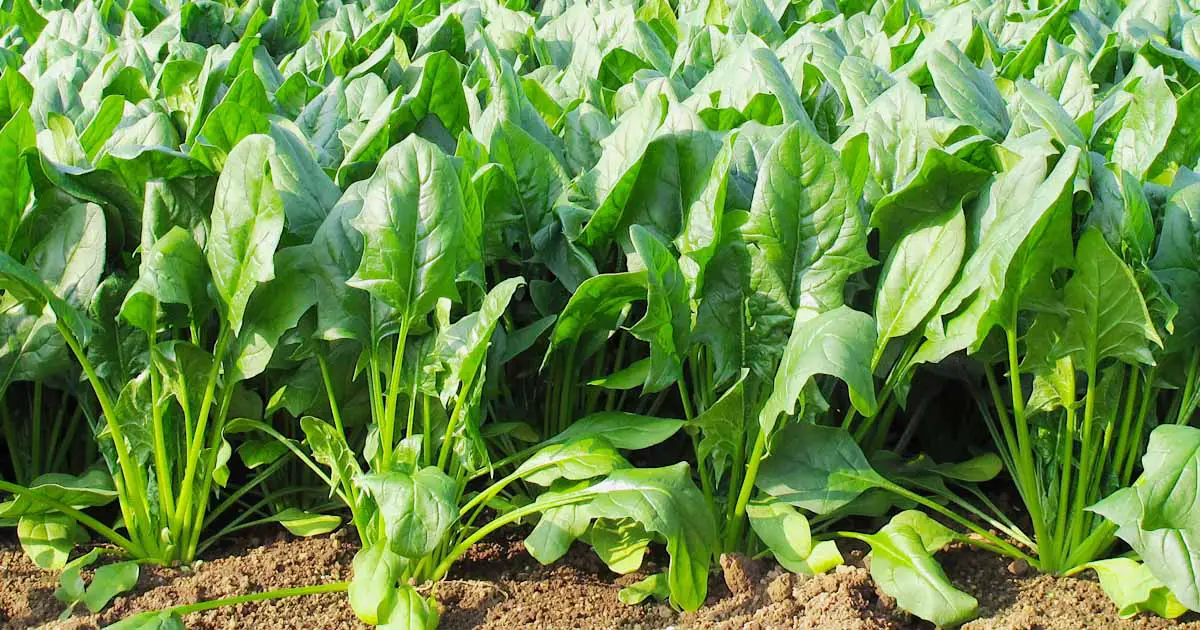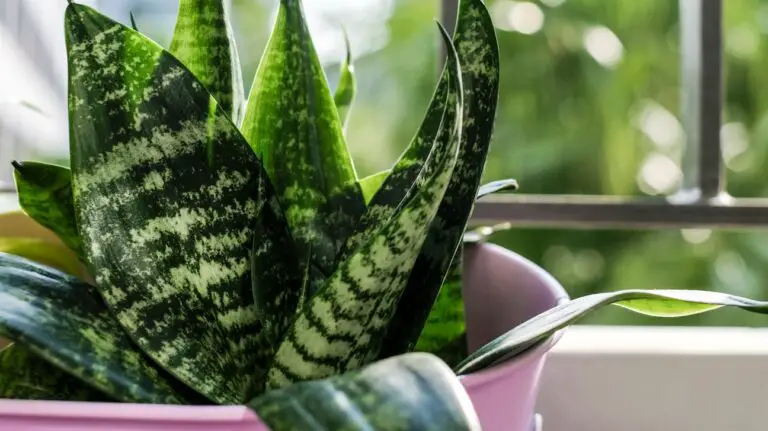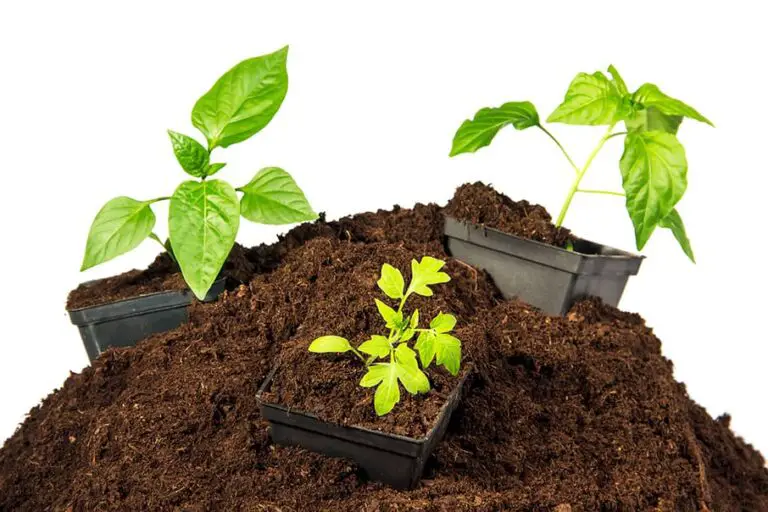How To Grow Spinach For The Best Harvest
Preparing the Soil
Soil preparation is a crucial step in growing successful spinach plants. Before planting, it is essential to ensure that the soil is rich in nutrients and has good drainage. Start by removing any weeds or debris from the planting area. This will help prevent competition for nutrients and ensure that the spinach plants have enough space to grow.
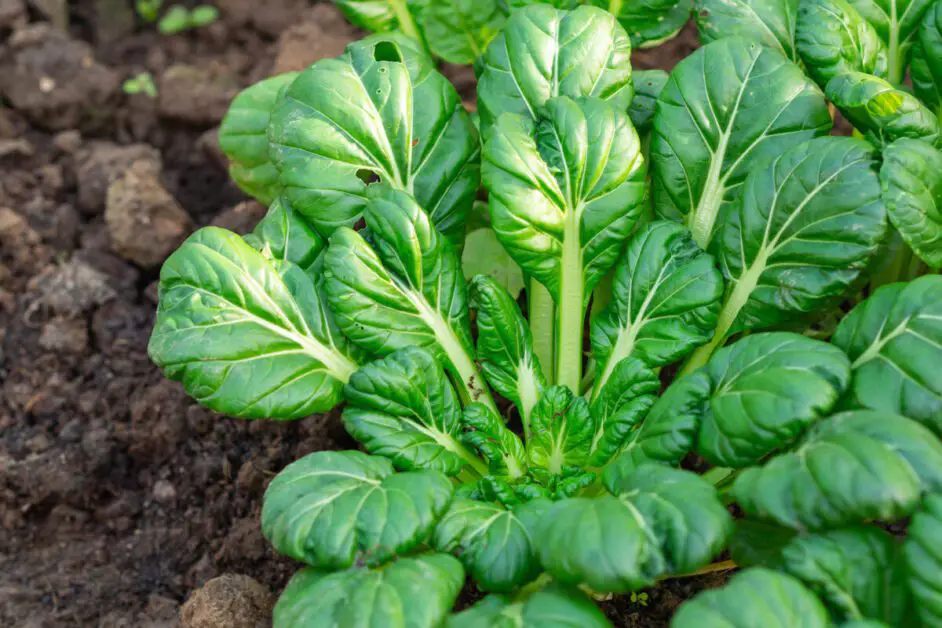
Next, loosen the soil using a garden fork or tiller to a depth of at least 8 to 10 inches. This will improve aeration and allow the roots to penetrate easily. Incorporate organic matter, such as compost or well-rotted manure, into the soil to enrich it with essential nutrients. Organic matter also improves the soil’s water-holding capacity and promotes beneficial microbial activity. Finally, level and smooth the soil surface using a rake to create a uniform planting bed.
Now that the soil is properly prepared, you can move on to selecting the right variety of spinach for your garden.
Choosing the Right Variety
When it comes to choosing the right variety of spinach for your garden, it is important to consider certain factors that will contribute to the success of your crop. One of the first things to consider is the purpose of your spinach. Are you looking to harvest baby leaves for salads, or do you prefer larger leaves for cooking? Different varieties have varying leaf sizes, textures, and flavor profiles, so knowing your desired end use will help you make an informed choice.
Another factor to consider is the climate in which you will be growing your spinach. Some varieties are more tolerant of heat, while others thrive in cooler temperatures. If you live in a region with hot summers, you may want to choose a variety that is specifically bred for heat tolerance to ensure a successful harvest. Conversely, if you live in a cooler climate, selecting a variety that can withstand frost will be beneficial.
In addition to considering the purpose and climate, it is also important to select a spinach variety that is disease-resistant. Spinach is susceptible to various pests and diseases, such as downy mildew and leaf miners. By choosing a resistant variety, you can minimize the risk of encountering these problems and increase the overall health and productivity of your spinach crop.
Here is a table that shows us some of the factors wee need to consider while choosing the right variety of spinach:
| Factor | Consideration |
|---|---|
| Purpose | Determine if you’ll harvest baby leaves for salads or larger ones for cooking. Select varieties based on leaf size, texture, and flavor profiles tailored to your preferred use. |
| Climate | Take into account your region’s climate. Opt for heat-tolerant varieties in hot summers and frost-resistant ones in cooler climates to ensure successful growth and harvest. |
| Disease Resistance | Choose spinach varieties resistant to common pests and diseases like downy mildew and leaf miners. This helps minimize risks and maintains overall crop health and productivity. |
| Growth Habit | Consider the growth habit—compact or spreading—based on your available space and preferred planting method, whether in rows or containers. Select a variety that suits your gardening setup and space constraints. |
| Harvest Time | Select varieties with suitable maturation times for your desired harvest schedule. Whether you prefer an early or extended harvest period, choosing the right time ensures a continuous supply of fresh spinach throughout the growing season. |
Remember, the choice of spinach variety is crucial for a successful harvest. By considering factors such as purpose, climate, and disease resistance, you can select the right variety that meets your needs and ensures a bountiful yield.
Sowing the Seeds
When sowing spinach seeds, it is essential to choose a suitable spot in your garden or raised beds. Spinach thrives in well-drained soil with a pH level between 6.0 and 7.5. Before sowing, prepare the soil by removing any weeds or debris, and ensure it is loose and friable. This will create an ideal environment for the seeds to germinate and establish strong roots.
Once the soil is ready, select spinach seeds that are known for their high germination rates and disease resistance. There are various spinach varieties available, such as savoy, smooth-leaf, and semi-savoy, each with its own unique characteristics. Consider factors like your location, climate, and personal preferences when choosing the variety that fits best for you.
To sow the seeds, create furrows in the soil that are approximately half an inch deep, with a spacing of at least 12 inches between each row. Gently scatter the seeds along the furrow, ensuring an even distribution. Cover the seeds with a thin layer of soil and lightly press it down to secure them. Water the area gently to provide moisture for germination, taking care not to displace the seeds. Remember to mark your rows carefully to avoid confusion once the seedlings emerge. With proper care and attention, you’ll soon see the beginnings of a bountiful spinach crop.
Providing Adequate Sunlight
Sunlight is an essential factor in the successful growth of spinach plants. As a leafy green vegetable, spinach thrives in full sunlight, requiring at least 6-8 hours of direct sunlight each day for optimal growth. Sunlight is crucial for photosynthesis, the process by which plants convert light energy into chemical energy, allowing them to produce food and grow. Adequate sunlight exposure ensures that spinach plants receive the necessary energy to develop strong and sturdy stems, vibrant foliage, and a bountiful harvest.
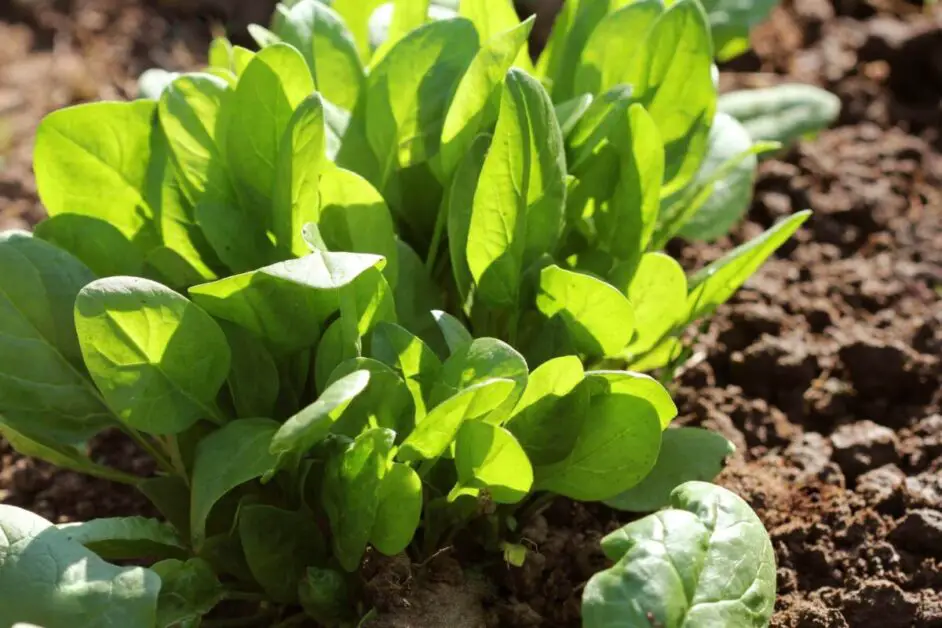
When selecting the ideal location for planting spinach, prioritize areas in your garden that receive the most sunlight throughout the day. Avoid shaded spots or areas near tall structures or trees that may cast shadows and limit the amount of sunlight reaching the plants. Additionally, consider any potential obstructions that could block sunlight during different times of the year, such as buildings or neighboring plants. By providing your spinach plants with the right amount of sunlight, you can help them thrive and achieve their maximum growth potential.
Watering Tips for Spinach Plants
Watering is one of the most crucial aspects of growing healthy spinach plants. As a leafy vegetable, spinach requires a consistent supply of water to thrive and produce abundant foliage. However, it is essential to strike a balance between providing adequate moisture and avoiding waterlogged soil, which can lead to root rot and other fungal diseases.
To ensure optimal watering for your spinach plants, it is recommended to water deeply and infrequently. This means providing a thorough watering session that penetrates the soil and reaches the plant’s roots, allowing them to absorb the moisture effectively. Aim to moisten the soil to a depth of at least 6 inches during each watering session. This encourages the spinach plant’s roots to grow deeper into the soil, accessing nutrients and water more efficiently. Moreover, deep watering helps prevent shallow root development, creating a stronger and more resilient plant.
Additionally, it is crucial to be mindful of the environmental conditions when watering spinach plants. During dry periods or in regions with high temperatures, spinach may require more frequent watering to prevent the soil from drying out. However, in cooler climates or during periods of rainfall, it is prudent to adjust the watering schedule accordingly and provide less water to avoid overhydration. By paying attention to your spinach plants’ specific needs and adapting your watering routine accordingly, you can ensure their healthy growth and bountiful harvests.
Fertilizing Techniques for Optimal Growth
Fertilizing is an essential technique in growing spinach plants, as it provides the necessary nutrients for optimal growth and productivity. The right fertilizing techniques can greatly improve the quality and quantity of your spinach harvest. One important aspect to consider is the timing of fertilizer application. Applying fertilizers too early may result in excessive leaf growth at the expense of root development, while applying them too late might not allow the plants to fully benefit from the nutrients. It is recommended to apply a balanced fertilizer, such as a 10-10-10 or 14-14-14 formula, during the early growth stages of spinach. This will ensure a steady supply of nutrients, promoting healthy foliage and root development.
Another critical factor to consider when fertilizing spinach plants is the method of application. Incorporating the fertilizer directly into the soil is the most effective way to provide nutrients to the plants. This can be done by broadcasting the granular fertilizer evenly over the designated planting area and then incorporating it into the top few inches of soil using a rake or garden fork. Alternatively, you can also use liquid fertilizers by diluting them according to the manufacturer’s instructions and applying them around the base of the plants. This method allows for quicker nutrient uptake by the roots. Whichever method you choose, be sure to follow the recommended application rates to prevent over-fertilization, which can harm the plants and the environment.
By following proper fertilizing techniques, you can ensure optimal growth and health for your spinach plants. Regularly monitoring the nutrient levels in the soil will help you determine if additional fertilization is required throughout the growing season. Remember to always refer to trusted sources or seek advice from local gardening experts to tailor your fertilizing approach to the specific needs of your spinach crop. With a well-executed fertilization strategy, you can expect robust spinach plants that yield bountiful and delicious leaves for your culinary endeavors.
Controlling Pests and Diseases
Pest and disease control is crucial for the successful growth and development of spinach plants. These leafy greens can be susceptible to a range of pests and diseases, which can significantly impact their overall health and productivity. However, by implementing effective control measures, gardeners can minimize the risk and ensure a thriving spinach crop.
One of the first steps in pest and disease control is prevention. Maintaining a clean and well-maintained garden area can help prevent the buildup of pests and diseases. Regularly remove any weeds, debris, or decaying plant material that may serve as breeding grounds for pests and pathogens. Additionally, practicing proper spacing between spinach plants can improve air circulation, reducing the likelihood of fungal diseases.
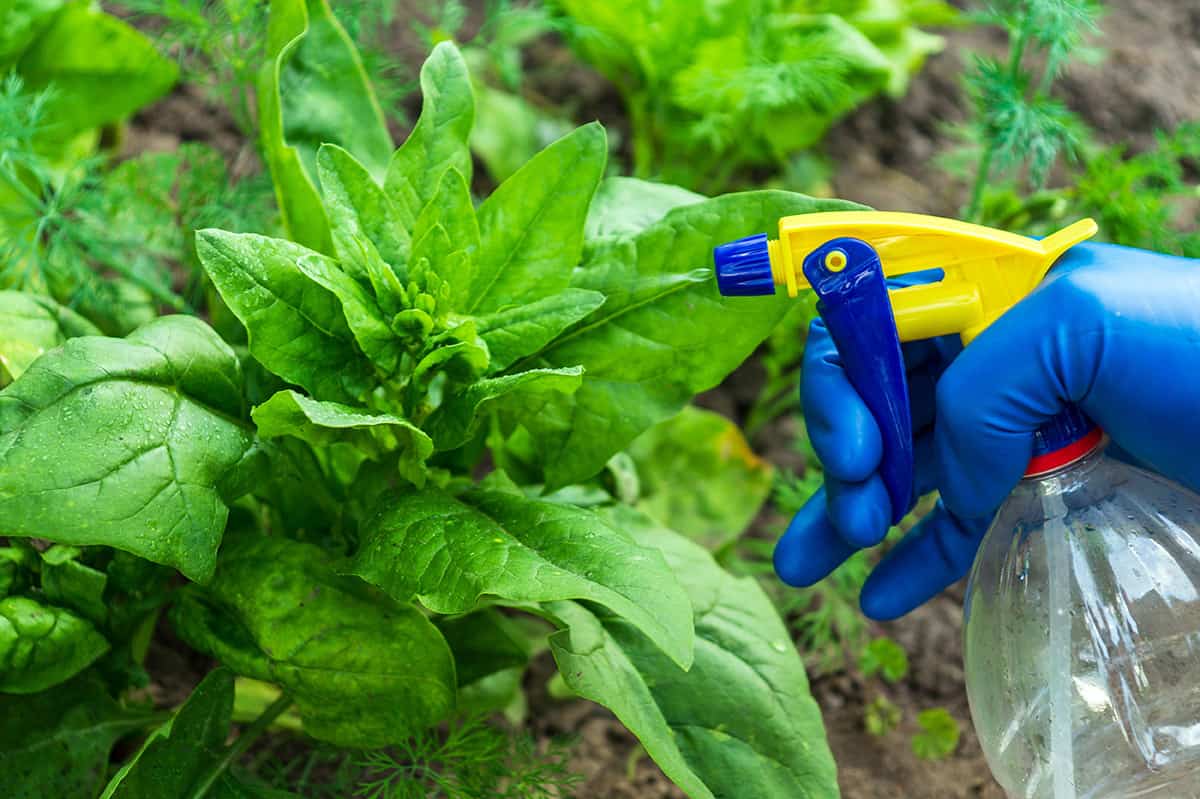
When it comes to pests, vigilance is key. Regularly inspect the spinach plants for any signs of infestation, such as chewed leaves, holes, or sticky residues. If identified early, manually removing the pests can be an effective control method. For more severe infestations, consider using organic pesticides or insecticidal soaps that are specifically formulated for spinach plants. It is important to carefully follow the instructions and dosage recommendations provided by the product manufacturer to ensure safe and effective pest control.
In the case of diseases, prevention and early detection are essential. Some common diseases that affect spinach plants include downy mildew, powdery mildew, and leaf spot. To minimize the risk of these diseases, avoid overhead watering as it can create favorable conditions for fungal growth. Instead, opt for watering at the base of the plants. If any disease symptoms are observed, promptly remove and dispose of the affected leaves to prevent further spread. Applying copper-based fungicides can also be an effective control measure, but be sure to follow the manufacturer’s instructions and recommendations for application frequency.
Maintaining a healthy and robust spinach crop requires consistent efforts in pest and disease control. By implementing preventative measures, staying vigilant for signs of infestation or disease, and taking prompt action when necessary, gardeners can enjoy a bountiful harvest of fresh and nutritious spinach leaves.
Harvesting Spinach Leaves at the Right Time
Harvesting spinach leaves at the right time is crucial to ensure that you enjoy the best flavor and texture from your homegrown spinach. Spinach leaves are ready to be harvested when they have reached a desirable size, typically around 4 to 6 inches in length. At this stage, the leaves are tender and full of nutrients.
To harvest the spinach leaves, carefully cut them near the base of the plant using a sharp pair of scissors or a knife. It’s important not to pull the leaves off as this can damage the plant and reduce future growth. When harvesting, take care to avoid damaging nearby leaves and stems.
Regular harvesting promotes continuous growth and encourages the production of new leaves. As spinach leaves mature, they may become slightly tougher and develop a bitter taste. By harvesting the leaves at the right time, you can ensure a steady supply of fresh, tasty spinach for your culinary needs.
Produce maximum spinach in quality and quantity by watching this video,
Storing and Preserving Spinach for Longevity
Storing and preserving spinach properly is key to ensuring its longevity and retaining its nutritional value. After harvesting the spinach leaves, it is important to handle them with care to prevent damage and maintain freshness. Begin by gently washing the leaves to remove any dirt or debris. It is advisable to use cold water and a salad spinner to dry the leaves thoroughly. Excess moisture can lead to spoilage, so make sure to remove as much water as possible.
Once the leaves are dry, you can store them in airtight containers or sealable plastic bags. Ensure that the containers are clean and dry before transferring the spinach. Properly sealed containers will help preserve the freshness of the greens and prevent moisture from seeping in. You can also consider wrapping the spinach leaves in paper towels before placing them in the containers to absorb any excess moisture. When properly stored, spinach can last up to a week in the refrigerator.
To further extend the shelf life of your spinach, you may opt for freezing. Blanching the leaves before freezing them in airtight freezer bags can help retain their color, texture, and nutrient content. Start by boiling water in a pot, then add the spinach leaves for a quick blanch for approximately two minutes. After blanching, immediately transfer the leaves to an ice bath to stop the cooking process. Pat dry the leaves before placing them in labeled freezer bags. This method can keep your spinach fresh for around six months.
Tips for Success in Growing Spinach
When it comes to successfully growing spinach, there are several key factors to consider. First and foremost, it is crucial to provide the right amount of sunlight. Spinach thrives in full sun, so it is important to choose a location in your garden that receives at least 6 to 8 hours of direct sunlight each day. If you are gardening indoors, consider using grow lights to provide adequate light for the plants.
Another important aspect to consider is watering. Spinach requires consistent moisture, but it is essential to avoid overwatering. This can lead to root rot and other diseases. Instead, aim to keep the soil evenly moist, providing water whenever the top inch of soil feels dry to the touch. Deep, infrequent waterings are better than frequent, shallow watering as it encourages the plants to develop a strong root system.
The tablw shows us the tips for successful spinach growth:
| Key Factor | Consideration |
|---|---|
| Sunlight | Ensure spinach gets 6-8 hours of direct sunlight daily. Choose sunny spots outdoors or use grow lights indoors for sufficient light. |
| Watering | Keep soil consistently moist, avoiding overwatering. Water when the top inch of soil is dry, preferring deep watering over frequent shallow ones for strong root development. |
| Soil Quality | Use well-draining, pH-balanced soil amended with compost for optimal nutrient absorption. |
| Temperature | Maintain a cool, consistent temperature between 50°F to 70°F (10°C to 21°C) to prevent bolting and ensure healthy leaf growth. Protect plants from extreme temperatures. |
By paying attention to these key factors, you can set yourself up for success in growing spinach. With proper sunlight and watering techniques, you can create an optimal growing environment for your spinach plants. Keep these tips in mind as you embark on your spinach-growing journey, and watch as your plants flourish and provide you with a bountiful harvest of nutritious greens.
How often should I water my spinach plants?
Spinach plants should be watered regularly, approximately once or twice a week, to keep the soil consistently moist but not waterlogged.
Can I grow spinach in containers?
Yes, spinach can be grown in containers as long as the container is deep enough to accommodate the roots and provides adequate drainage.
How can I control pests and diseases that affect spinach plants?
To control pests, you can use organic insecticides or introduce beneficial insects like ladybugs. Regularly inspecting your plants for signs of disease and promptly removing infected leaves can help prevent the spread of diseases.
When is the right time to harvest spinach leaves?
Spinach leaves can be harvested when they are large enough to be eaten, usually around 4-6 weeks after sowing the seeds. Harvesting can be done by cutting the outer leaves or the whole plant, depending on your preference.
How should I store and preserve spinach for longevity?
After harvesting, spinach should be stored in a plastic bag or container in the refrigerator. To preserve it for a longer period, blanch the leaves in boiling water for a few seconds, then transfer them into ice water before freezing.
Can I grow spinach in a shaded area?
While spinach prefers full sun, it can tolerate partial shade. However, it may grow slower and produce smaller leaves when grown in a shaded area.
How can I improve the soil for growing spinach?
Before planting, enrich the soil with organic matter, such as compost or well-rotted manure, to improve its fertility and drainage. Spinach thrives in nutrient-rich soil.
Can I save seeds from my spinach plants for future planting?
Yes, spinach plants produce seeds that can be saved for future planting. Allow the plants to bolt and produce seed heads, then collect the seeds and store them in a cool, dry place.
How long does it take for spinach seeds to germinate?
Spinach seeds usually take around 7-14 days to germinate, depending on the temperature and soil conditions. Keep the soil consistently moist during this period.
Are there any specific fertilizers I should use for growing spinach?
Spinach generally requires a balanced fertilizer with equal amounts of nitrogen, phosphorus, and potassium. However, it’s best to conduct a soil test to determine any specific nutrient deficiencies and adjust the fertilizer accordingly.

